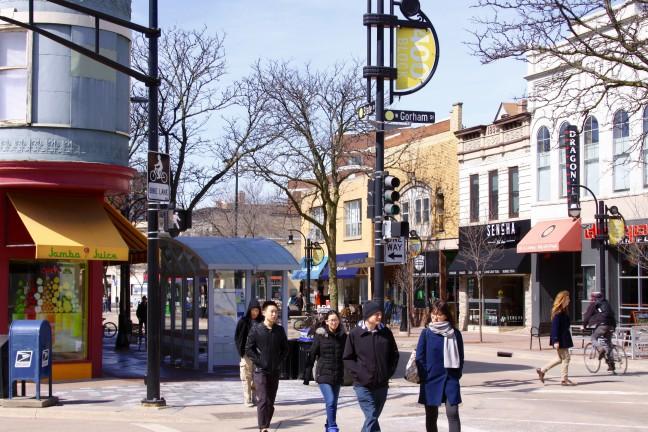It’s 4:15 p.m. on a Friday, and I gear up to make my 10-minute walk to work.
I grab my tote containing my wallet, mask, water bottle, headphones, keys and BelAir Cantina t-shirt and quickly check the work schedule on my way out the door.
There are three servers, two bartenders, one host and a manager on the schedule for one of our busiest nights of the week. To put that in perspective, just two short months ago we had nine servers, three bartenders, four hosts and a manager consistently four nights a week.
Now we are lucky to have more than 10 staff members in the restaurant at once.
I have been working at BelAir for six months and have slowly watched the progression of the restaurant go from arguably overstaffed to viciously understaffed. This isn’t unique to just BelAir Cantina — this has been striking restaurants all down State Street and across the country.
Working as a college student isn’t uncommon. In 2018, 43% of full-time college students were employed. But so much has changed within the past year — from no job openings last fall to every business desperately trying to get people in the door for an interview less than a year later.
The job market since the pandemic has been anything but consistent, and no industry knows that better than the restaurant industry.
Being a full-time student can mean anywhere from 13 to 19 credit semesters with 40-plus hours of schoolwork outside of class per week. Not to mention club meetings and events to attend, a social life to maintain solely for sanity’s sake and then the obligation of an understaffed part time job.
It’s a lot. It’s no wonder a lot of students work during the summer and decide to resign when the air crisps up, leaves start to fall and classes return.
The students who decide to stay have another hill to navigate — availability. Some students work once a week on a dedicated morning because that is all their full schedule allows, while others, like myself, can make two to three nights a week work.
I go to class in the mornings, do homework through mid-day and head home to change before my seven-hour bartending shift. If it’s not super busy at work, I will pull out my laptop and do homework in between making margaritas.
The one or two servers working with me have their school stuff stationed right next to mine and will stop by to copy notes or quickly type up a sentence on their way back from a table and into the kitchen. Same as any other student on campus, we are all trying to navigate getting a degree and passing classes while holding a job in a currently struggling industry.
As difficult as it can be to struggle through staffing issues, employees find support through one another. Senior Thomas Montana works as a bar-back at Wando’s and said “employee morale overall is high. Our staff, mostly college-aged adults, are friendly and helpful to one another.”
This isn’t unique to Wando’s. Holly Darter, a server at Bassett Street Brunch Club, said employee morale is higher with a rare, full staff.
But Darter has also experienced understaffing firsthand.
“The restaurant I worked at previously was very understaffed — having ample employees has a huge positive impact on the business … When a business is understaffed, it causes the staff that are there to be put under more stress and responsibility which often causes irritability,” Darter said.
Personally speaking, morale at BelAir Cantina is best described as hesitantly positive — we are currently in the tunnel but there is a light at the end.
Understaffing aside, working in the restaurant industry as a college student on such a lively campus adds spice to life. There are endless stories to tell, lots of bowls of chips and salsa to be eaten and never a dull moment.


